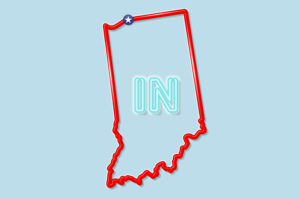For many Hoosiers facing significant medical expenses, particularly those requiring long-term care, Medicaid can be a lifeline. However, qualifying for this federal government health insurance program can be a complex process, especially when it comes to managing assets and income that exceed the standard eligibility limits. This is in most cases, where Medicaid spend-down in Indiana comes into play.
Understanding Medicaid Spend-Down
Medicaid spend-down is a provision that allows individuals with income or assets exceeding the standard Medicaid thresholds to still qualify for benefits. It essentially allows you to “spend down” your excess assets or resources by spending on qualifying medical expenses until you meet the designated spend-down amount. Once your medical bills reach that level, Medicaid coverage kicks in for the remainder of the eligibility period.
Who Can Benefit from Spend-Down?
Spend-down is particularly beneficial for seniors who require nursing home care or individuals with chronic medical conditions leading to high medical bills. While Indiana has specific income and asset limits for standard Medicaid eligibility (as of 2024, $2,829/month income and $2,000 in assets for a single applicant in a nursing home), exceeding these limits doesn’t automatically disqualify you. With spend-down, you can become eligible by strategically using your excess resources to cover qualifying medical expenses.
Calculating the Spend-Down Amount
The first step is to determine your spend-down amount. This is calculated by subtracting the monthly income limit from your actual monthly income. For example, if your monthly income is $3,200 and the income limit is $2,829, your monthly spend-down amount would be $371 ($3,200 – $2,829).
Qualifying Medical Expenses
It’s important to understand that not all medical expenses count towards the spend-down. Here are some expenses generally considered for spend-down in Indiana:
- Medicare premiums and co-pays
- Long-term care facility costs
- Doctor visits and prescriptions
- In-home care services
- Over-the-counter medications (with a doctor’s prescription)
Planning Your Spend-Down Strategy
There are various ways to spend down your excess resources. Here are some options to consider:
- Pay off existing medical bills: This is a straightforward method but requires careful recordkeeping to ensure proper documentation for the Medicaid agency.
- Prepay for medical expenses: You can prepay for upcoming medical needs that are medically necessary and approved by your doctor.
- Incur allowable medical expenses: Utilize services like in-home care, dental care, or vision care to reach the spend-down amount.

Important Considerations
- Lookout Period: Indiana has a look-back period of 60 months before your Medicaid application. Asset transfers made during this period to become eligible for Medicaid might result in penalties.
- Seek professional guidance: Navigating Medicaid spend-down can be complex. Consider consulting an elder law attorney or a Medicaid planning specialist for personalized advice on strategizing your spend-down and ensuring you comply with all regulations.
- Documentation is key: Maintain meticulous records of all medical bills, receipts, and proof of income to support your spend-down when applying for Medicaid.
Additional Resources Available
Indiana offers various resources to assist you with Medicaid and spend-down:
- Indiana Medicaid: [invalid URL removed]
- Indiana Family and Social Services Administration (FSSA): https://www.in.gov/fssa/ (https://www.in.gov/fssa/)
- Legal Services Corporation: https://www.lsc.gov/ (https://www.lsc.gov/) can connect you with low-cost or free legal aid for Medicaid applications.
Conclusion
Medicaid spend-down in Indiana provides a valuable opportunity for individuals exceeding income or asset limits to access essential healthcare benefits. By understanding the program’s requirements, planning your spend-down strategy, and seeking professional guidance when needed, you can navigate this process and potentially qualify for Medicaid coverage.
Disclaimer
This article provides general information and is not a substitute for professional legal or financial advice. It’s crucial to consult with qualified professionals to ensure you make informed decisions regarding your specific situation.
Share This Article
